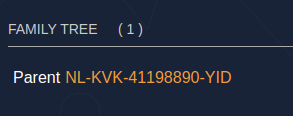HI everyone
I do like that this thread over three years old, 24 posts long, and still not at consensus!
I think we can learn lessons from this around the potential complexity of rulesets and validation of - and this might be a simple case!
The reason for my posting here, is that @Herman @stolk @David_Megginson @Wendy @ximboden @pelleaardema and I discussed related-activity during a focus on FTS & IATI last week.
We got to this very same question: should related-activity be used to point / link between activities published by different reporting-orgs?
Having reread this thread, I think our position is:
- most cases suggest that
related-activity should be reserved for pointing within a publisher dataset
- however, there’s a case to suggest otherwise:
– when a publisher is a part of a federation / network of organisations, and needs to relate to an activity (published by another reporting-org) that provides more context
– similarly, when a donor is publishing alongside another donor, and needs to signal that their funding is connected
And that, brings the codes for “co-funded” and “third-party” into question.
However, as @herman confirmed, use of related-activity outside of the scope would mean a fail of Netherlands MFA validation rules, although not render the data useless
So… I’m still not sure we have a Best Practice on use of this element. As more publishers create and connect data, it strikes me we need something…

